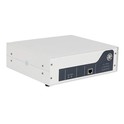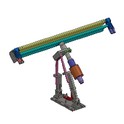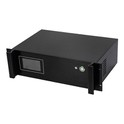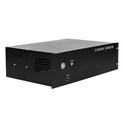What is the processing speed of a 1000w ultrasonic generator in material processing?
As a supplier of 1000W ultrasonic generators, I am often asked about the processing speed of these powerful devices in material processing. Understanding the processing speed is crucial for industries that rely on ultrasonic technology for various applications, such as welding, cutting, cleaning, and dispersion. In this blog post, I will delve into the factors that influence the processing speed of a 1000W ultrasonic generator and provide insights into its performance in different material processing scenarios.
Understanding Ultrasonic Processing
Before we discuss the processing speed, let's briefly understand how ultrasonic generators work in material processing. Ultrasonic generators convert electrical energy into high - frequency mechanical vibrations. These vibrations are then transmitted to the workpiece through a transducer and a horn or sonotrode. The high - frequency vibrations create intense mechanical stress, heat, and cavitation effects in the material, which can be used to achieve various processing goals.
Factors Affecting the Processing Speed
-
Material Properties
The type of material being processed has a significant impact on the processing speed. Different materials have different physical and chemical properties, such as density, hardness, viscosity, and melting point. For example, soft and low - viscosity materials like plastics and some polymers can be processed more quickly than hard and high - density materials like metals. When processing metals, the ultrasonic generator may need to work harder to overcome the material's strength, resulting in a slower processing speed. -
Processing Method
The specific processing method also affects the speed. For ultrasonic welding, the time required to achieve a strong weld joint depends on factors such as the joint design, the pressure applied, and the power density of the ultrasonic vibrations. In ultrasonic cleaning, the processing speed is related to the size and complexity of the parts being cleaned, as well as the degree of contamination. For example, cleaning small and simple parts with light contamination will be faster than cleaning large and intricate parts with heavy dirt. -
Generator Power and Frequency
Although we are specifically looking at 1000W ultrasonic generators, the power output and frequency of the generator play a role in determining the processing speed. A 1000W generator provides a certain amount of energy to the material. Higher power generally means more energy is available for processing, which can potentially increase the processing speed. However, the frequency also matters. Different frequencies are more suitable for different materials and processing methods. For example, lower frequencies (e.g., 20kHz) are often used for welding and cutting thicker materials, while higher frequencies (e.g., 40kHz) are better for delicate cleaning and some fine - scale processing tasks. -
Tooling Design
The design of the horn or sonotrode, which is the part that comes into contact with the material, can affect the processing speed. A well - designed horn can efficiently transfer the ultrasonic vibrations to the material, maximizing the energy utilization. For example, a horn with the right shape and size can focus the ultrasonic energy on the target area, reducing the processing time.
Processing Speed in Different Applications
-
Ultrasonic Welding
In ultrasonic welding of plastics, a 1000W ultrasonic generator can achieve relatively fast processing speeds. For small - to medium - sized plastic parts, welding times can range from a few tenths of a second to a few seconds. The generator can quickly generate the heat needed to melt the plastic surfaces and form a strong bond. However, for larger or more complex plastic parts, or when welding plastics with high melting points, the processing time may increase.

-
Ultrasonic Cutting
When it comes to ultrasonic cutting, the 1000W generator can cut through various materials at a reasonable speed. For soft materials like rubber and some thin fabrics, the cutting process can be quite fast. However, for harder materials such as thick leather or certain types of synthetic materials, the cutting speed will be slower as the generator needs to overcome the material's resistance. -
Ultrasonic Cleaning
In ultrasonic cleaning applications, the 1000W generator can clean a variety of parts efficiently. For small parts with light contamination, the cleaning process can be completed in a matter of minutes. However, for larger parts or parts with heavy contamination, the cleaning time may be extended. The generator creates cavitation bubbles in the cleaning solution, which implode and remove dirt and debris from the surface of the parts.
Comparison with Higher - Power Ultrasonic Generators
While a 1000W ultrasonic generator is suitable for many applications, there are scenarios where higher - power generators may offer faster processing speeds. For example, 6000W Ultrasonic Generator, 2000W Ultrasonic Generator, and 3000W Ultrasonic Generator can provide more energy for processing larger or more difficult - to - process materials. These higher - power generators are often used in industrial applications where high - volume and high - speed processing are required.
Conclusion
The processing speed of a 1000W ultrasonic generator in material processing is influenced by multiple factors, including material properties, processing method, generator power and frequency, and tooling design. In many common applications such as ultrasonic welding, cutting, and cleaning of small - to medium - sized parts, a 1000W generator can offer satisfactory processing speeds. However, for more demanding applications or when processing large - scale or difficult materials, higher - power generators may be a better choice.
If you are interested in learning more about our 1000W ultrasonic generators or other power - level ultrasonic generators and how they can meet your material processing needs, we encourage you to reach out for a detailed discussion. We are committed to providing high - quality ultrasonic solutions and helping you optimize your material processing operations.
References
- Smith, J. (2018). Ultrasonic Technology in Material Processing. Industrial Press.
- Johnson, A. (2019). Advanced Ultrasonic Applications in Manufacturing. Wiley - Blackwell.






